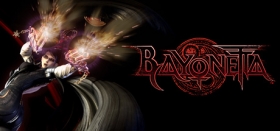
10 Years Later, Bayonetta Is Still the Pinnacle of Action Games
Recently, critically acclaimed cult hit Bayonetta got re-released for PlayStation 4 and Xbox One. Being a big fan of the game, I jumped at the opportunity to play through it again with this cleaned up remaster. While I’ve always had a soft spot for this game, playing through it again reaffirmed my admiration for the title, and my stance that it may be the most finely crafted action game ever released.
While Bayonetta has a lot of aspects that I could gush over (the consistent escalation of the scope and spectacle, the constant forward momentum of the game’s pacing, the loveable cast of characters, and the incredible finale just to name a few), I’d like to in particular focus on the gameplay. To be specific, I’m going to focus on how Bayonetta manages to perfectly walk the line between being a beginner friendly power fantasy, whilst also accommodating the most hardcore of action fans with punishing difficulty options and deep gameplay systems.

Like any notable and well-respected action game, Bayonetta’s systems are multi-layered and complex. During any given battle, there are a lot off tools to take advantage of: Dodge Offset (which allows you to continue combos whilst dodging by holding down the attack button), Wicked Weaves (which deliver extra damage upon the completion of a combo), and Torture Attacks that can be activated at the cost of magic to deliver massive damage are all systems that are unique to Bayonetta, and are essential for achieving higher rankings and finishing the tougher difficulties.
The action game staples of different weapons with different properties, along with varying combos for each distinct weapon are also present, and it can be a lot to take in. It can sound daunting for a new player, but what Bayonetta manages to do better than any other action game I’ve played is introduce all of these ideas slowly to new players, while also delivering on that essential riveting action gameplay, with breakneck paced combat and flashy combos.

This is achieved through two different elements: the self-explanatory auto-combo system present in the lowest two difficulties, and Bayonetta’s Witch Time. Witch Time is a system that allows players to slow down enemies’ movements temporarily upon the completion of a perfectly timed dodge. It might sound like a bit of a crutch – after all, action games don’t usually have this kind of leeway when it comes to dealing with enemies – but its brilliance comes in its balance.
On lower difficulties, Witch Time is a great way to let players learn the movement and attack patterns of the tougher enemies and practice their own combos, figuring out what weapons and attacks work best against each type. On higher difficulties however, the game gradually diminishes the effectiveness and longevity of Witch Time, with the highest difficulty of the game removing the ability entirely. This allows less experienced and more casual players to jump in and have a fulfilling time with the game, without stripping away the challenge for more experienced players who are looking to push their expertise to their limit.

A lot of action games balance their difficulties in interesting ways, retooling enemies and difficulty levels. While Bayonetta also does this, it takes this a step further by giving players a comfortable defensive option, and gradually lessening its effectiveness as the difficulties start to increase in a way that’s similar to removing the stabilisers from a child is learning to ride a bike.
Difficulty balancing in games is a nebulous topic. There’s no “correct” way to go about it. While some players may find a game to be too challenging, others might adapt to it quickly and get through it with relative ease. In some ways, Bayonetta may seem like the optimal way to balance difficulty in games. As stated before, Bayonetta’s qualities are plentiful, but I think that the way it manages to be easily approachable without sacrificing its complexities helps make it the crowning jewel within the pantheon of action games.









COMMENTS